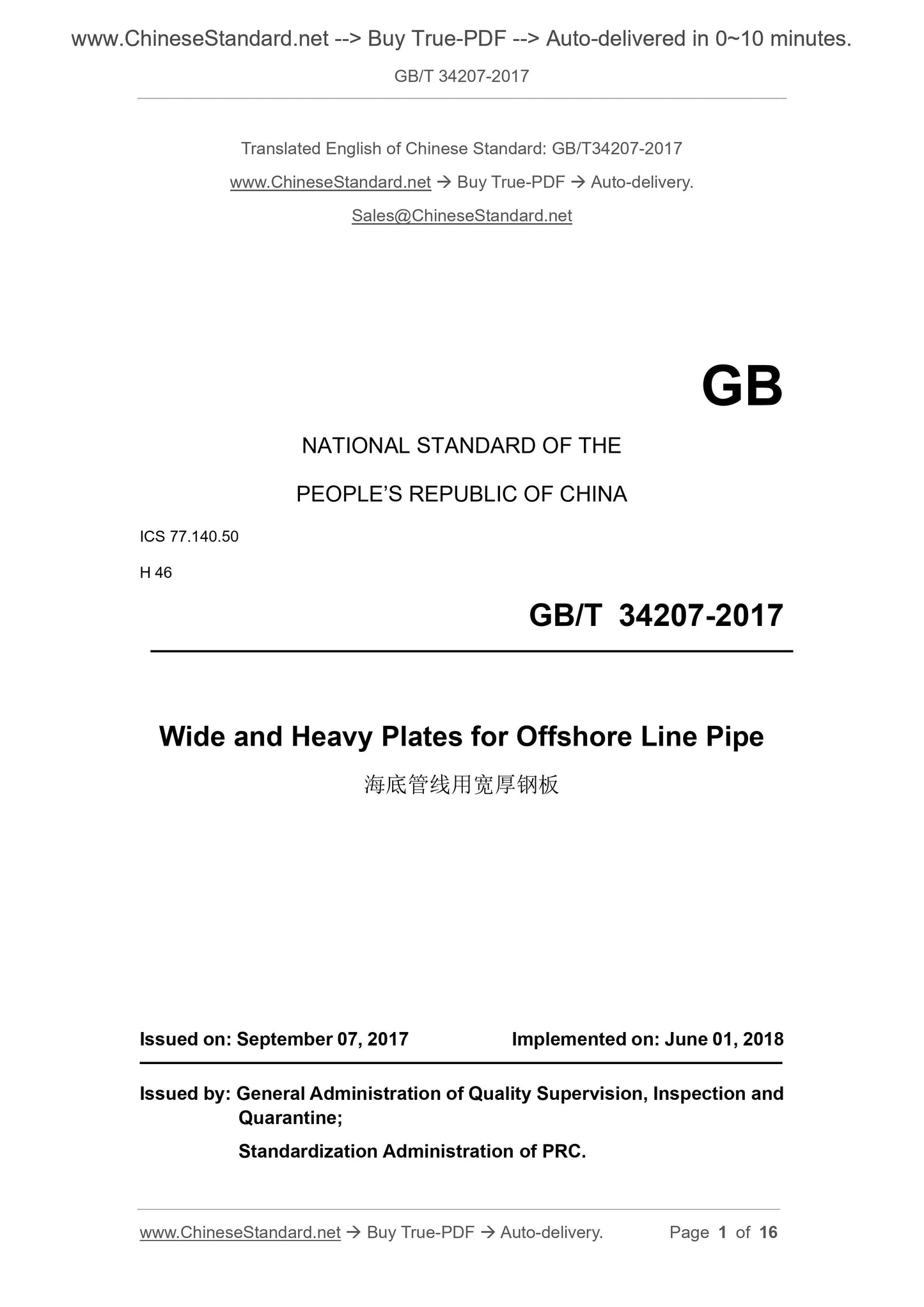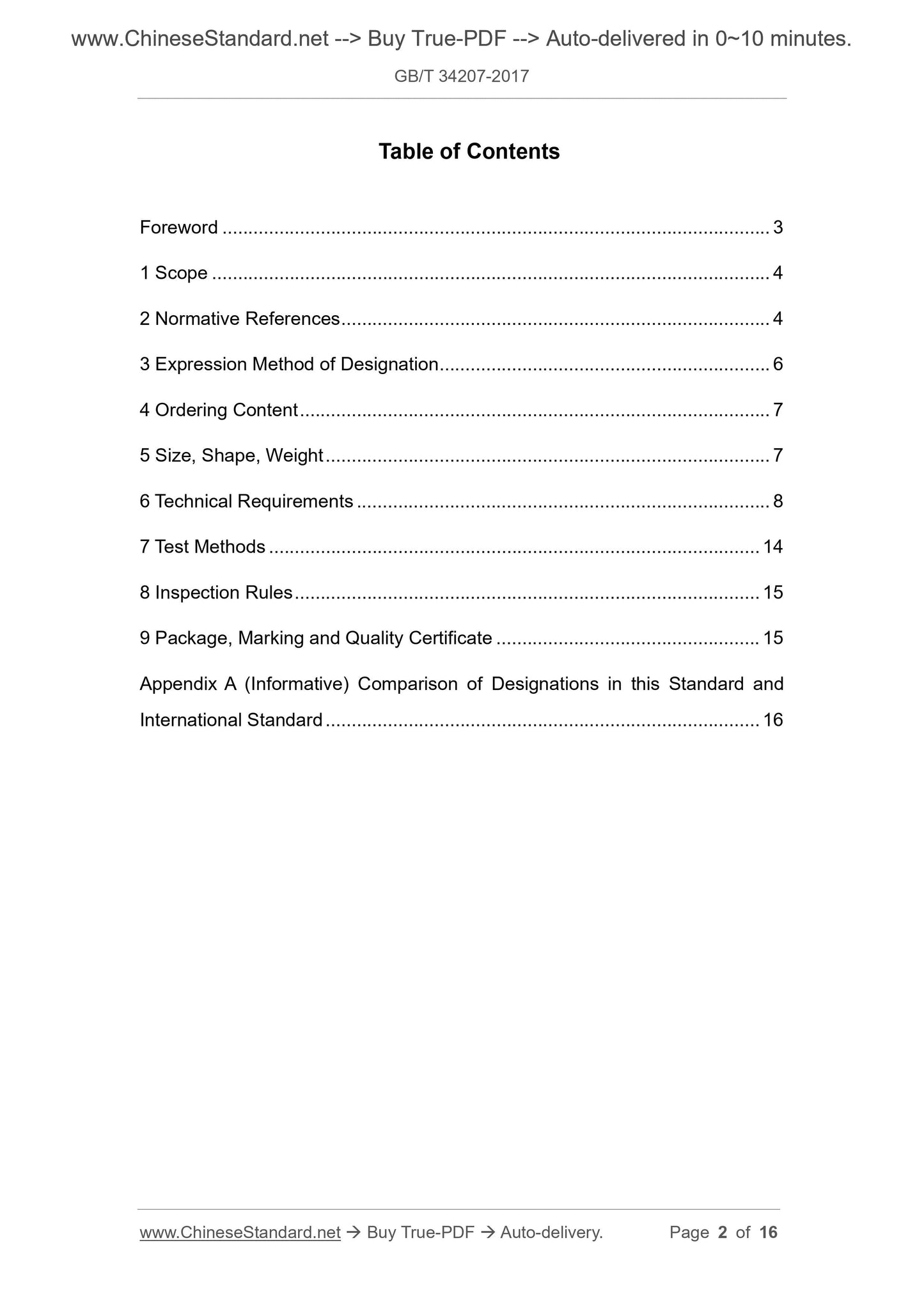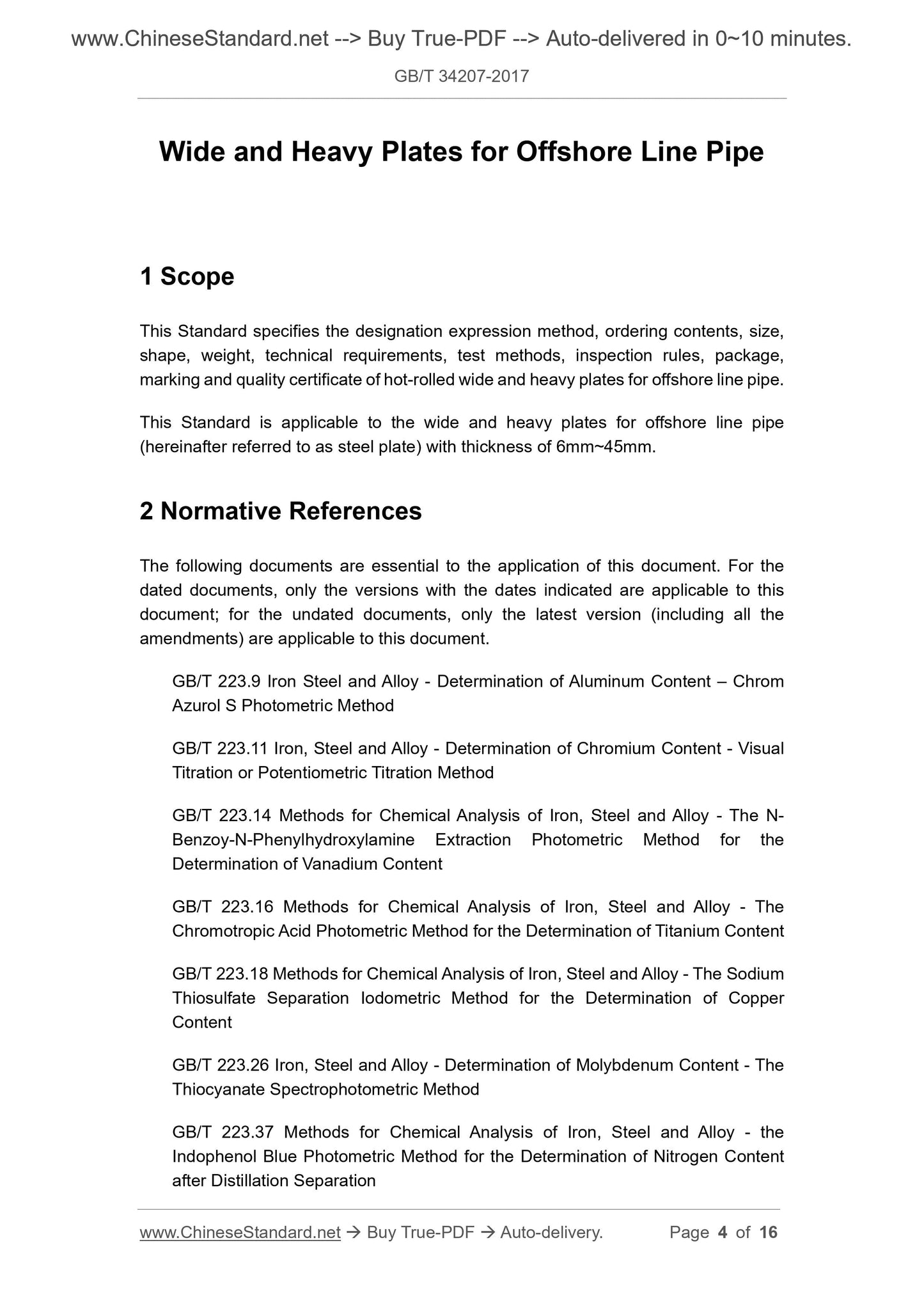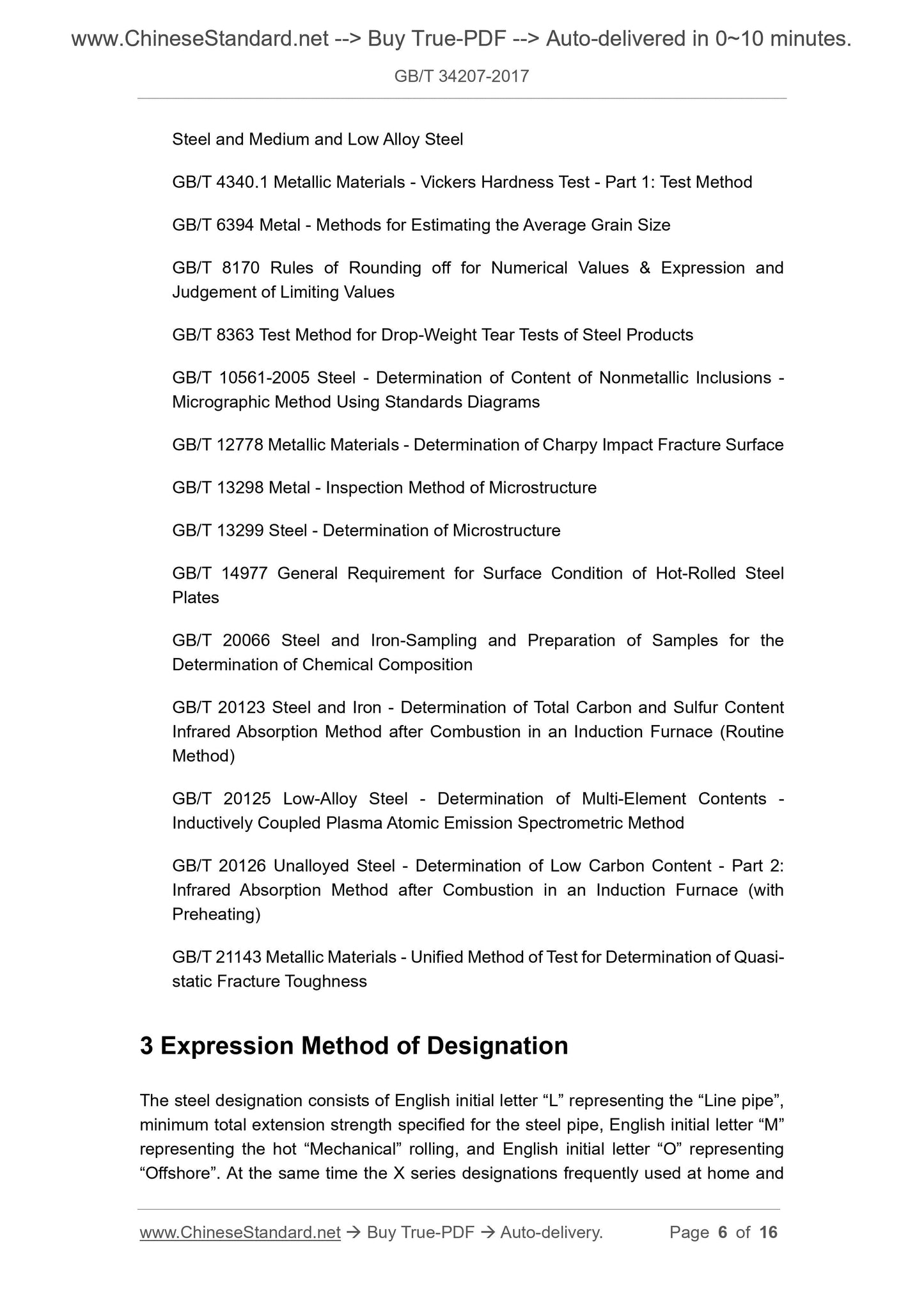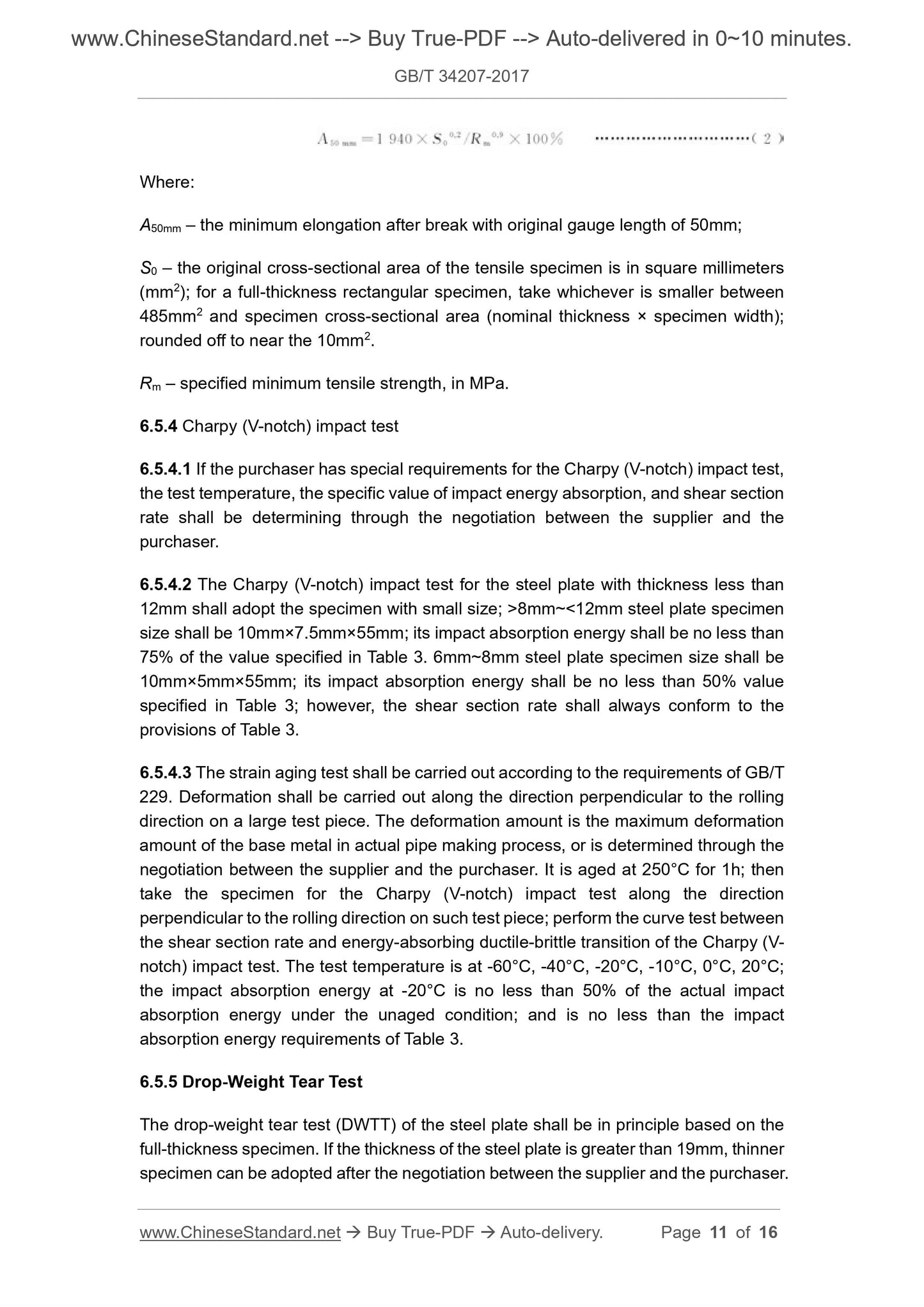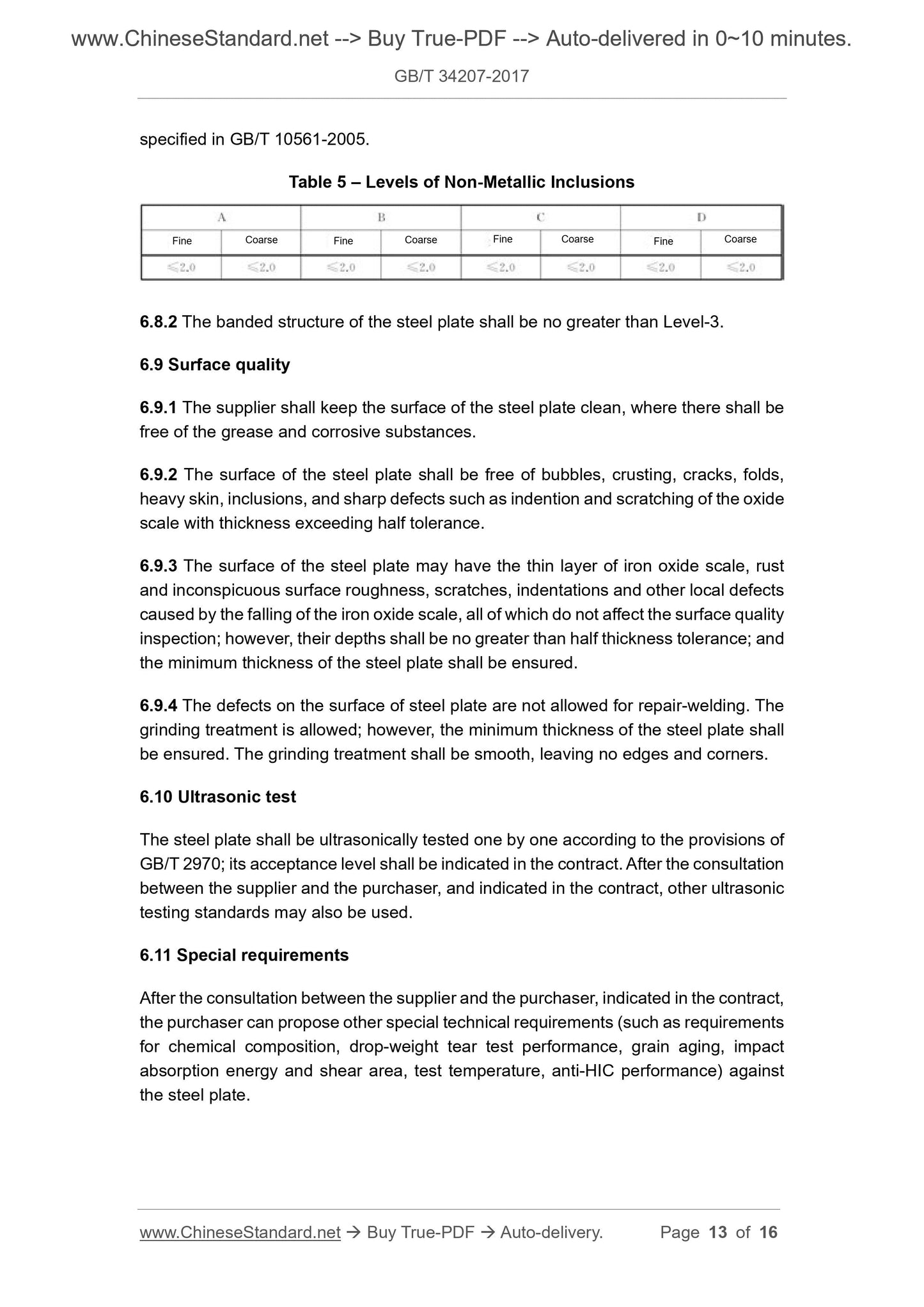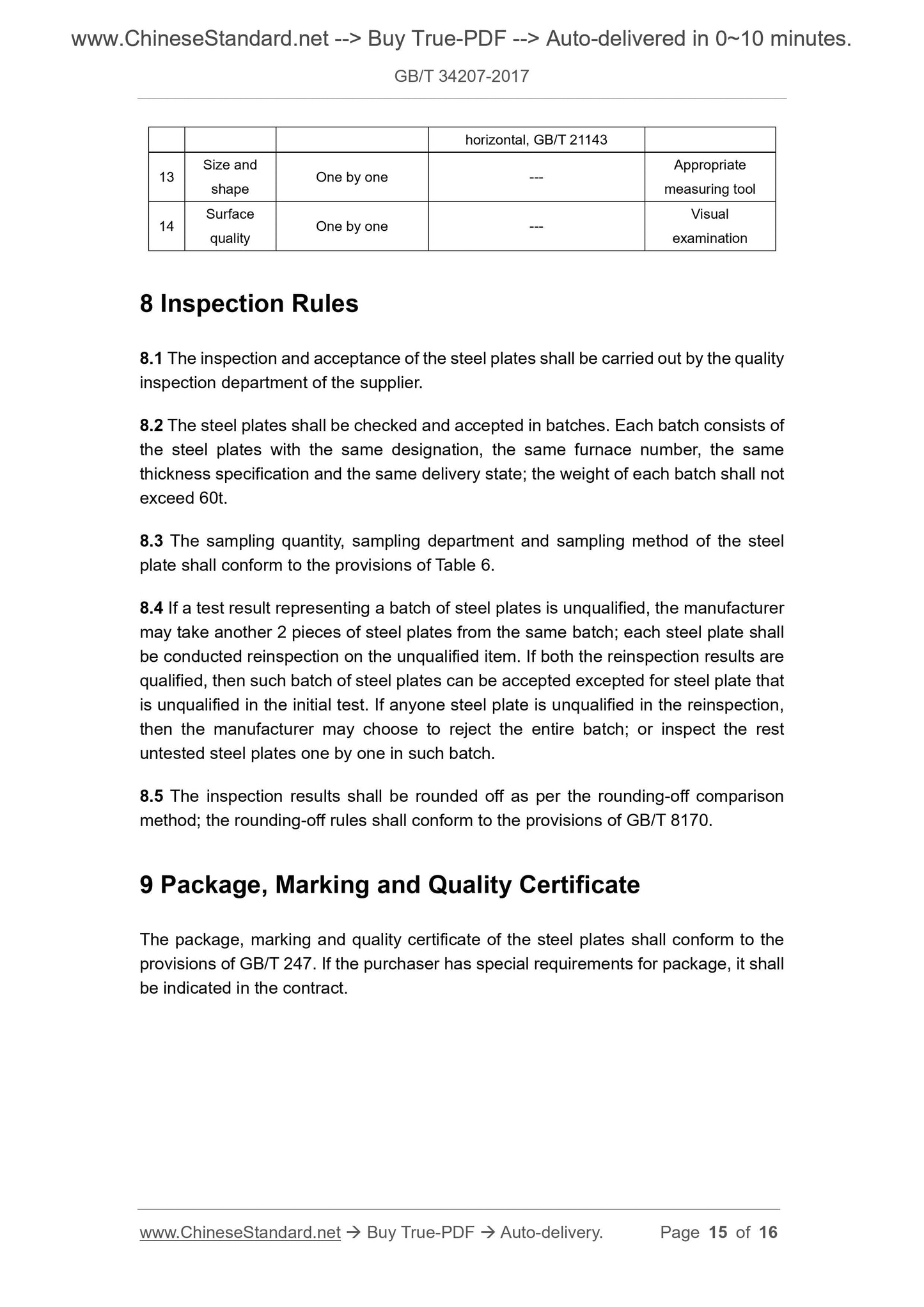1
/
of
7
www.ChineseStandard.us -- Field Test Asia Pte. Ltd.
GB/T 34207-2017 English PDF (GB/T34207-2017)
GB/T 34207-2017 English PDF (GB/T34207-2017)
Regular price
$160.00
Regular price
Sale price
$160.00
Unit price
/
per
Shipping calculated at checkout.
Couldn't load pickup availability
GB/T 34207-2017: Wide and Heavy Plates for Offshore Line Pipe
Delivery: 9 seconds. Download (and Email) true-PDF + Invoice.Get Quotation: Click GB/T 34207-2017 (Self-service in 1-minute)
Newer / historical versions: GB/T 34207-2017
Preview True-PDF
Scope
This Standard specifies the designation expression method, ordering contents, size,shape, weight, technical requirements, test methods, inspection rules, package,
marking and quality certificate of hot-rolled wide and heavy plates for offshore line pipe.
This Standard is applicable to the wide and heavy plates for offshore line pipe
(hereinafter referred to as steel plate) with thickness of 6mm~45mm.
Basic Data
| Standard ID | GB/T 34207-2017 (GB/T34207-2017) |
| Description (Translated English) | Wide and Heavy Plates for Offshore Line Pipe |
| Sector / Industry | National Standard (Recommended) |
| Classification of Chinese Standard | H46 |
| Word Count Estimation | 11,178 |
| Date of Issue | 2017-09-07 |
| Date of Implementation | 2018-06-01 |
| Issuing agency(ies) | General Administration of Quality Supervision, Inspection and Quarantine of the People's Republic of China, Standardization Administration of the People's Republic of China |
Share
